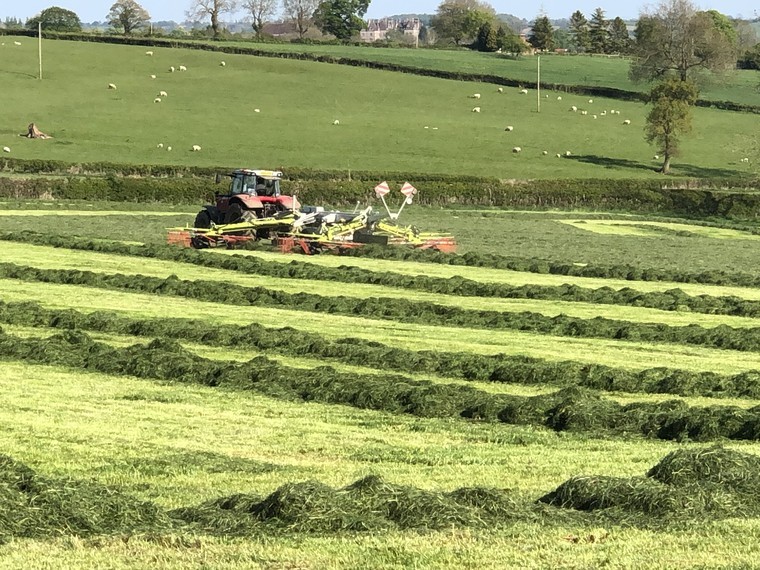Now, more than ever, producing high quality grass silage in a multi-cut system stacks up financially, says Kite Consulting’s David Levick. With feed and fertiliser prices so high, good quality silage is more valuable and David is urging farmers to make sure it’s as good as possible.
“With good silage now worth an estimated £60 per tonne it’s so important that every mouthful of silage your cows eat is of the highest quality,” David explains. “Silage shouldn’t just be palatable, but also of the highest nutrient value you can make.”
“When fertiliser prices rose to £650/tonne, Kite Consulting calculated that silage making costs jumped from £25 last year to nearer £50/tonne. Now, with fertiliser prices even higher – if it’s even available at all – we’ve calculated that silage making costs have added around 3.5p per litre to the costs of milk production and we could even see silage costs rising to £70 per tonne. And while milk prices have risen to help cover these increases, the cost of making grass silage has way more than doubled!
“At these prices it is critical we maximise feed value and minimise wastage, so let’s look at the relative feed values,” David adds. “With the cost of the simplest energy and protein feed sources, such as rape and wheat, having recently risen to over £440/tonne and £350 /tonne respectively, grass or grass silage is still, by a long way, the best value feed we can give our cows. It’s around 60% better value for money than rape and wheat and this holds true even with the lower feed prices being quoted for this winter.”
This is where a multi-cut grass silage system really comes into its own. Grass is cut more often across the season, while leaving a higher stubble height and green cover behind, encouraging faster grass regrowth.
“The highest quality part of the plant is harvested and ensiled so the silage itself is a higher nutritional value, but the multi-cut system also utilises the slurry and fertiliser farmers apply after each cut more efficiently. The green leaf sward left behind by multi-cutting is better able to use the nutrients straight away to maximise regrowth,” says David.
Cutting height is vital. “Spreading slurry and fertiliser onto a green leaf stubble, rather than a shorter stubble, reduces leaching, volatility and wastage,” David explains. “Most importantly, it prevents the ground from drying out, which does a lot of sward damage.”
With, ideally, 60% of the cow’s diet coming from forage, high energy, high protein grass silage with high levels of very digestible fibre really drives the rumen. “With a multi-cut system, we see around 45% more protein and 35% more energy produced per acre over the season than in a conventional silage system,” says David. “How much would that cost you to replace with purchased feed at today’s prices?
David continues: “It is critical that we look at using an effective additive that works well with multi-cut silage. Recently I’ve seen multi-cut quality silage but with outrageous levels of lactic acid, which makes it much more complicated to feed out. In these cases, there is additional cost and work to neutralise it in the diet.
Some lactic acid producing additives just don’t know when to stop, particularly with these high quality, high sugar, low NDF grasses. There are alternative additives that work in a completely different way were sugars are retained, secondary fermentation is stopped, the feed value in enhanced and we don’t have to worry about extreme acid loading. Speak to your independent Kite consultant, or ring Advance sourcing for more information.”
Even with a rise in fertilisers and contractor fees, David feels it makes economic sense to adopt a multi-cut system. “Talk to your contractor about charging and look to pay per hour or per tonne. Producing high quality grass silage that drives milk production across the winter makes huge economic sense. The cows will reward you for it.”




